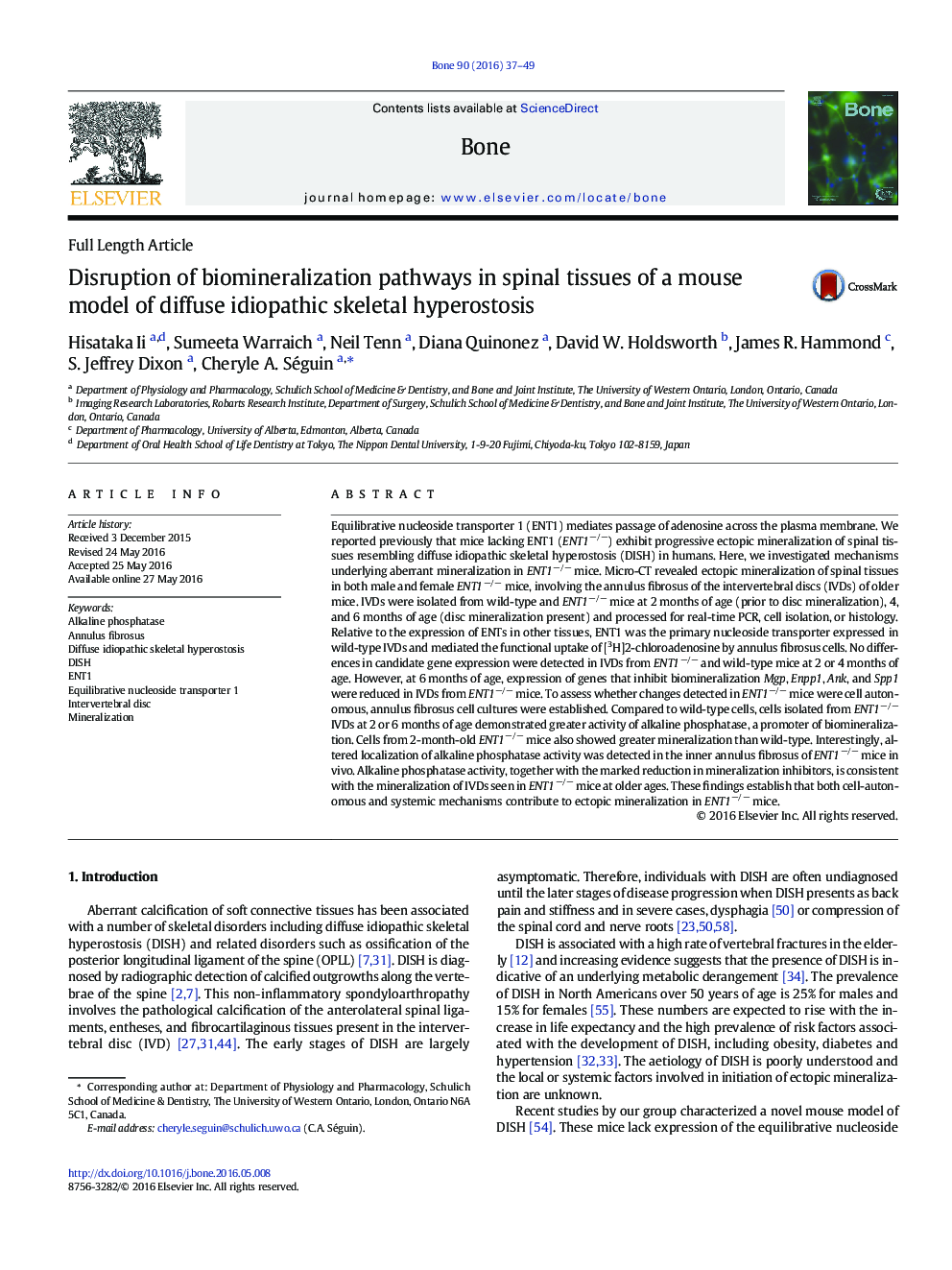| Article ID | Journal | Published Year | Pages | File Type |
|---|---|---|---|---|
| 5888802 | Bone | 2016 | 13 Pages |
Abstract
Equilibrative nucleoside transporter 1 (ENT1) mediates passage of adenosine across the plasma membrane. We reported previously that mice lacking ENT1 (ENT1â/â) exhibit progressive ectopic mineralization of spinal tissues resembling diffuse idiopathic skeletal hyperostosis (DISH) in humans. Here, we investigated mechanisms underlying aberrant mineralization in ENT1â/â mice. Micro-CT revealed ectopic mineralization of spinal tissues in both male and female ENT1â/â mice, involving the annulus fibrosus of the intervertebral discs (IVDs) of older mice. IVDs were isolated from wild-type and ENT1â/â mice at 2Â months of age (prior to disc mineralization), 4, and 6Â months of age (disc mineralization present) and processed for real-time PCR, cell isolation, or histology. Relative to the expression of ENTs in other tissues, ENT1 was the primary nucleoside transporter expressed in wild-type IVDs and mediated the functional uptake of [3H]2-chloroadenosine by annulus fibrosus cells. No differences in candidate gene expression were detected in IVDs from ENT1â/â and wild-type mice at 2 or 4Â months of age. However, at 6Â months of age, expression of genes that inhibit biomineralization Mgp, Enpp1, Ank, and Spp1 were reduced in IVDs from ENT1â/â mice. To assess whether changes detected in ENT1â/â mice were cell autonomous, annulus fibrosus cell cultures were established. Compared to wild-type cells, cells isolated from ENT1â/â IVDs at 2 or 6Â months of age demonstrated greater activity of alkaline phosphatase, a promoter of biomineralization. Cells from 2-month-old ENT1â/â mice also showed greater mineralization than wild-type. Interestingly, altered localization of alkaline phosphatase activity was detected in the inner annulus fibrosus of ENT1â/â mice in vivo. Alkaline phosphatase activity, together with the marked reduction in mineralization inhibitors, is consistent with the mineralization of IVDs seen in ENT1â/â mice at older ages. These findings establish that both cell-autonomous and systemic mechanisms contribute to ectopic mineralization in ENT1â/â mice.
Keywords
Related Topics
Life Sciences
Biochemistry, Genetics and Molecular Biology
Developmental Biology
Authors
Hisataka Ii, Sumeeta Warraich, Neil Tenn, Diana Quinonez, David W. Holdsworth, James R. Hammond, S. Jeffrey Dixon, Cheryle A. Séguin,
